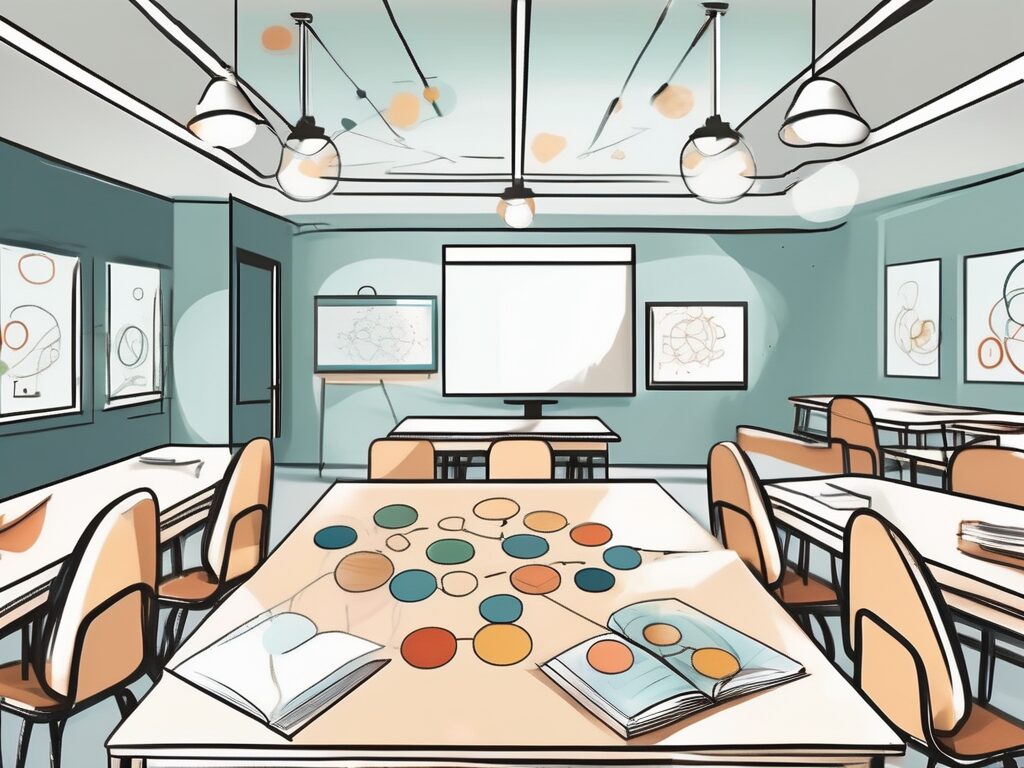In the dynamic world of education, collaborative teaching has emerged as a powerful strategy to enhance learning outcomes. Particularly in the vibrant city of Dubai, where diversity is the norm and innovation is the heartbeat, the adoption of collaborative teaching methods is transforming classrooms into vibrant learning communities. Let’s delve into five effective strategies that are making waves in the Dubai education scene.
1. Team Teaching
Team teaching, also known as co-teaching, is a strategy where two or more educators work together to plan, organise, instruct and assess the same group of students. This approach is akin to having two chefs in a kitchen, each bringing their unique flavours to create a delightful dish.
In the context of Dubai, where classrooms are often multicultural, team teaching allows educators to cater to diverse learning styles and needs. It’s like having a tour guide for every nationality in a global village, ensuring that no one is left behind in the learning journey.
Moreover, team teaching promotes professional development as educators can learn from each other’s teaching styles, akin to musicians in an orchestra learning to harmonise their instruments. This strategy not only enhances the learning experience for students but also fosters a culture of continuous learning among educators.
2. Station Teaching
Station teaching is a strategy where the classroom is divided into several ‘stations’ or learning areas, each managed by an educator. Think of it as a food court, where each stall offers a different cuisine, providing a variety of options for the hungry diner.
In Dubai’s diverse classrooms, station teaching allows educators to provide differentiated instruction, catering to the unique learning needs of each student. It’s like having a tailor-made suit for every student, ensuring a perfect fit for their learning style.
Furthermore, station teaching encourages student autonomy as they navigate through the different stations, much like a traveller exploring different cities on a map. This strategy not only fosters independent learning but also cultivates a sense of responsibility among students.
3. Parallel Teaching
Parallel teaching is a strategy where the class is divided into two equal groups, and each educator teaches the same content to their respective group. Picture it as two parallel train tracks, each leading to the same destination but allowing more passengers to travel comfortably.
In Dubai’s bustling classrooms, parallel teaching reduces the student-teacher ratio, ensuring that each student receives more individual attention. It’s like having a personal trainer for every student, providing customised guidance for their learning journey.
Additionally, parallel teaching allows educators to experiment with different teaching methods, much like a scientist testing different hypotheses in a lab. This strategy not only enhances the teaching experience but also promotes innovation in education.
4. Alternative Teaching
Alternative teaching is a strategy where one educator teaches the majority of the students, while the other educator works with a smaller group on different or supplemental content. Imagine it as a main stage and a breakout session at a conference, each catering to different audience needs.
In Dubai’s inclusive classrooms, alternative teaching allows educators to provide additional support to students who need it, much like a safety net for a trapeze artist, ensuring they don’t fall behind.
Moreover, alternative teaching provides opportunities for enrichment activities for advanced learners, much like a fast track for athletes, propelling them towards higher achievements. This strategy not only ensures equitable learning but also nurtures talent and potential.
5. Lead and Support Teaching
Lead and support teaching is a strategy where one educator takes the lead in teaching, while the other educator provides support by assisting students, managing behaviour, and providing additional explanations. Think of it as a captain and a first officer on a flight, each playing a crucial role in ensuring a smooth journey.
In Dubai’s dynamic classrooms, lead and support teaching ensures that all students stay engaged and understand the content, much like a GPS ensuring that all passengers reach their destination.
Furthermore, lead and support teaching allows educators to focus on their strengths, much like a football team where each player excels in their position. This strategy not only optimises the teaching process but also enhances job satisfaction among educators.
In conclusion, collaborative teaching is revolutionising education in Dubai, transforming classrooms into vibrant learning communities. By adopting these strategies, educators can enhance learning outcomes, cater to diverse learning needs, promote professional development, foster student autonomy, and ensure equitable learning. So, let’s embrace collaborative teaching and together, we can shape the future of education in Dubai.
Elevate Your Teaching Career with IPGCE
Ready to take your collaborative teaching skills to the next level and stand out in the international education arena? Join IPGCE, the UK’s #1 Teacher Training Course, and overcome the barriers to qualification that hold many back. With our International Postgraduate Certificate in Education, you’ll not only enhance your credentials and increase your chances for interviews by 50%, but you’ll also unlock new career progression opportunities with a 45% boost in promotion rates and a significant salary increase. Connect with a global network of educators, gain a deep understanding of international curricula, and enjoy the flexibility of balancing professional development with your teaching commitments. Don’t let isolation or limited advancement define your teaching journey. Join the UK’s #1 Teacher Training Course today and transform your future in education.

